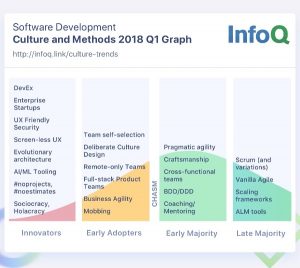— June 23, 2017

Unsplash / Pixabay
Help wanted. Apply within.
When HR professionals start to think more like marketers, and vice versa
We talk about journeys a lot in marketing. Customer journeys. Candidate journeys. The thing about a journey, at least in branding terms, is that everybody needs to travel together. You can’t have one company department driving, one sitting helplessly in the passenger seat, while another jogs along beside.
Many companies are still being reactive, as opposed to proactive, in the way that they approach talent acquisition
The other thing with journeys of this kind is that often people fail to look past the bit that they’re embarked upon. Some feel they’ve reached their destination. But the journey for your customers, the journey for your recruitment, and the journey for your brand all point in the same direction.
The ultimate destination is, essentially, your bottom line.
Joined-up thinking
The other day I described the fundamental reason why sales and marketing need to be on the same page to create that singular customer experience, a factor growing in stature and which is soon to surpass even product and price as a key differentiator for brands.
The candidate journey can start before your ideal candidate has even heard of you
There’s a fundamental basis for HR and marketing to join forces, and the principles are the same. The candidate journey can start before your ideal candidate has even heard of you, but it doesn’t end when they’re hired.
A recent report from Aptitude Research Partners – the Recruitment Marketing Index 2017 – rightly points out that recruitment marketing is a practice that must benefit both the candidate and the recruiter. Note the word ‘marketing’: the marketing must benefit the recruiter, ergo, the brand.
This can be quite hard to visualise in real terms. It’s one of the reasons why many companies are still being reactive, as opposed to proactive, in the way that they approach talent acquisition. Essentially, these firms put out an advert, cross their fingers, and hope the best people respond to it.
Four out of ten companies, according McKinsey & Co, that are planning to hire next year say they have had unfilled job openings for six months or over because they can’t find the right people. Far too often, the reason is that the recruitment process starts and ends with the application.
Thinking ahead, and being aware of what’s required to achieve hiring objectives, is key. It all needs to happen a great deal earlier; that’s why seven out of 10 companies are cosying up with recruitment marketing partners. Recruiters need to start thinking like marketers, and the primary area for this is in the candidate experience.
Opportunity knocks
First, it’s worth pointing out that opportunity is still ripe in the mid-market. Many larger organisations are investing in recruitment marketing and new technologies to that effect, but lower down the investment dwindles a little; quite simply, there isn’t yet that same faith in its effectiveness.
The cost of investing in recruitment marketing is justified
However, it’s only a matter of time before agencies and providers move down the markets and start competing on more affordable, effective solutions. In any case, the report expresses that the cost of investing in recruitment marketing is justified when you look at the value it brings in the long term.
It’s just a case of visualising where that value comes from. Which brings us nicely back to the journey.
A united front
There are many reasons for HR and marketing to join forces. Creating a cohesive journey that everyone can subscribe to is very important. Plus, you’re in competition with a whole host of companies that are piling their efforts and investment into recruitment marketing. In other words, you can theoretically be left with a pool of candidates that are only as reactive as you strived to be, and arguably not quite as proactive as the ones you never heard from.
But here’s the kicker: great recruitment marketing, that combines the forces of both these seasoned journey-makers, is also about future-proofing your brand.
By having marketing involved in your recruitment process, you have at your disposal people that are tuned to – or may have even helped to conceive – the brand narrative, that are now seeking out candidates with that same disposition. All of a sudden, not only are you engaging the people that are ideally skilled for the job, you’re also on the lookout for those candidates that exhibit the potential to keep fighting your brand corner.
Every time you hire, you build a workforce of brand ambassadors
It’s almost like a loyalty scheme. You’re literally out to hire your brand ambassadors. Apply this methodology every time you need a new hire, and you build a workforce of brand ambassadors.
Furthermore, if you pitch your recruitment marketing just right and align it with your internal communications – which must leverage the skills of both HR and marketing – then you’ll achieve better staff retention. Soon enough, your entire company will be made up of dedicated, engaged people, innately and ubiquitously in tune with your brand identity, constantly creating a cohesive brand experience and a consistent brand identity for your customers, at every touch point.
When HR and marketing work together – HR professionals start to think more like marketers, and vice versa – that’s a unity that has the capacity to filter down to your candidates, your customers, and your overall profitability.
Business & Finance Articles on Business 2 Community
(70)
Report Post









